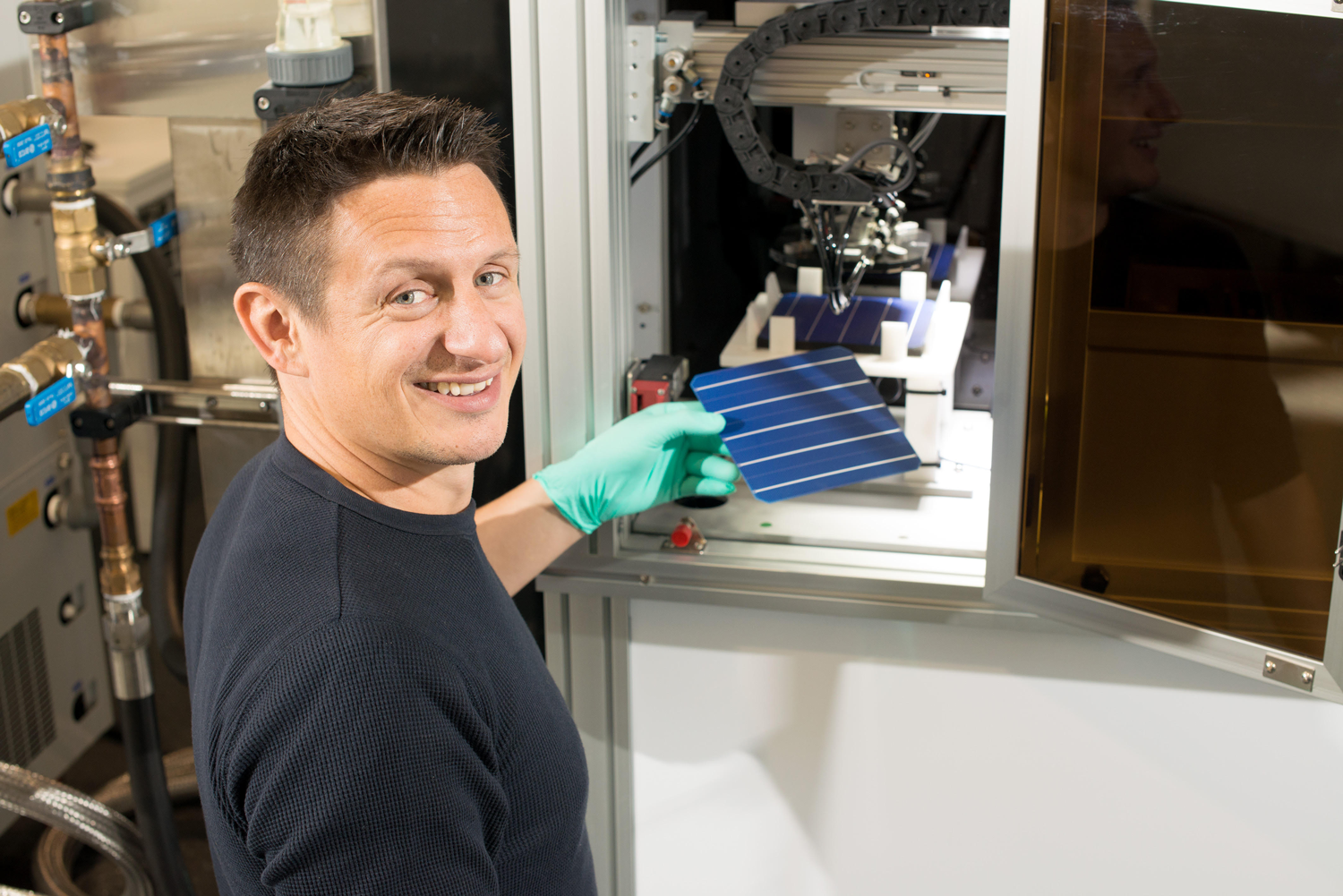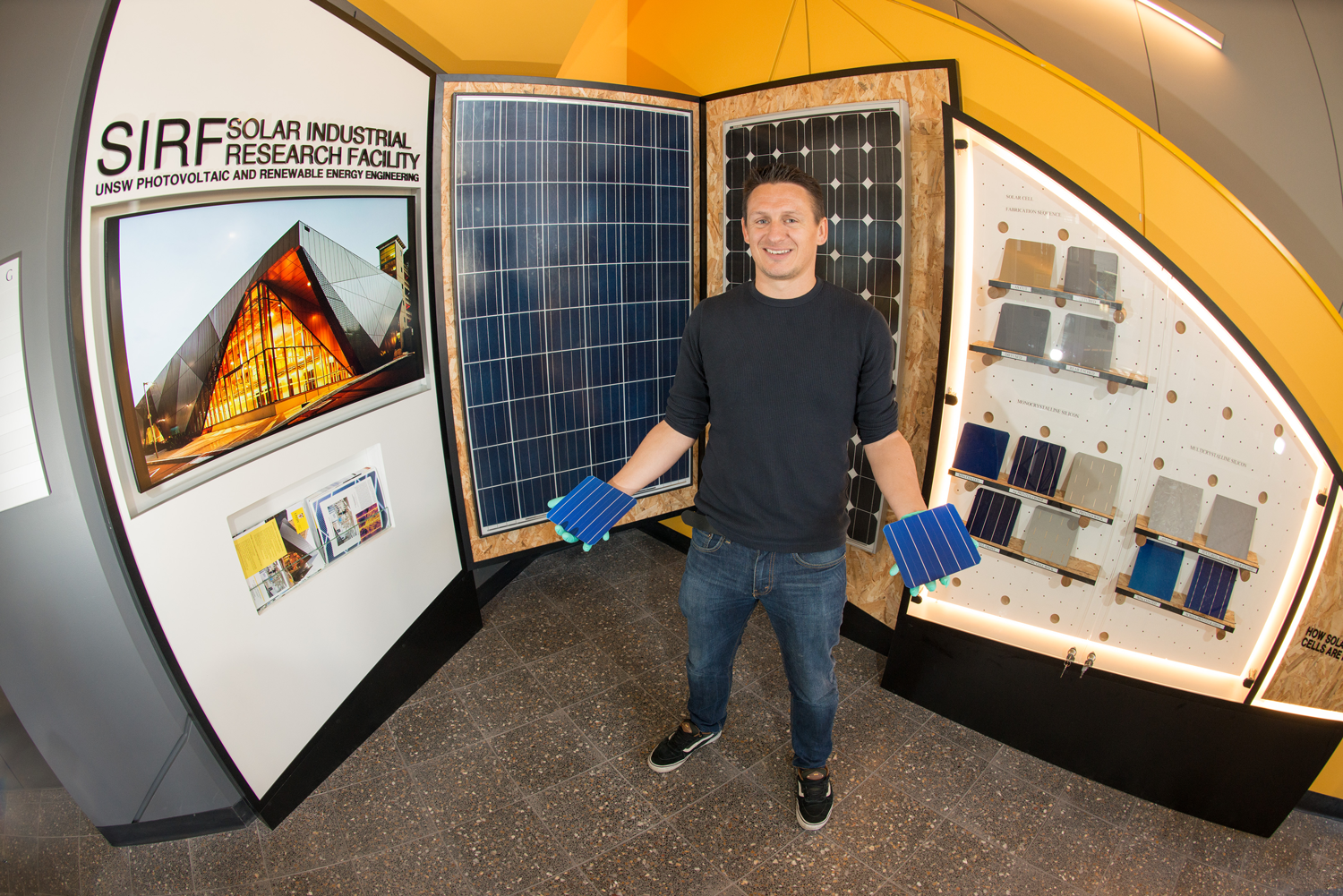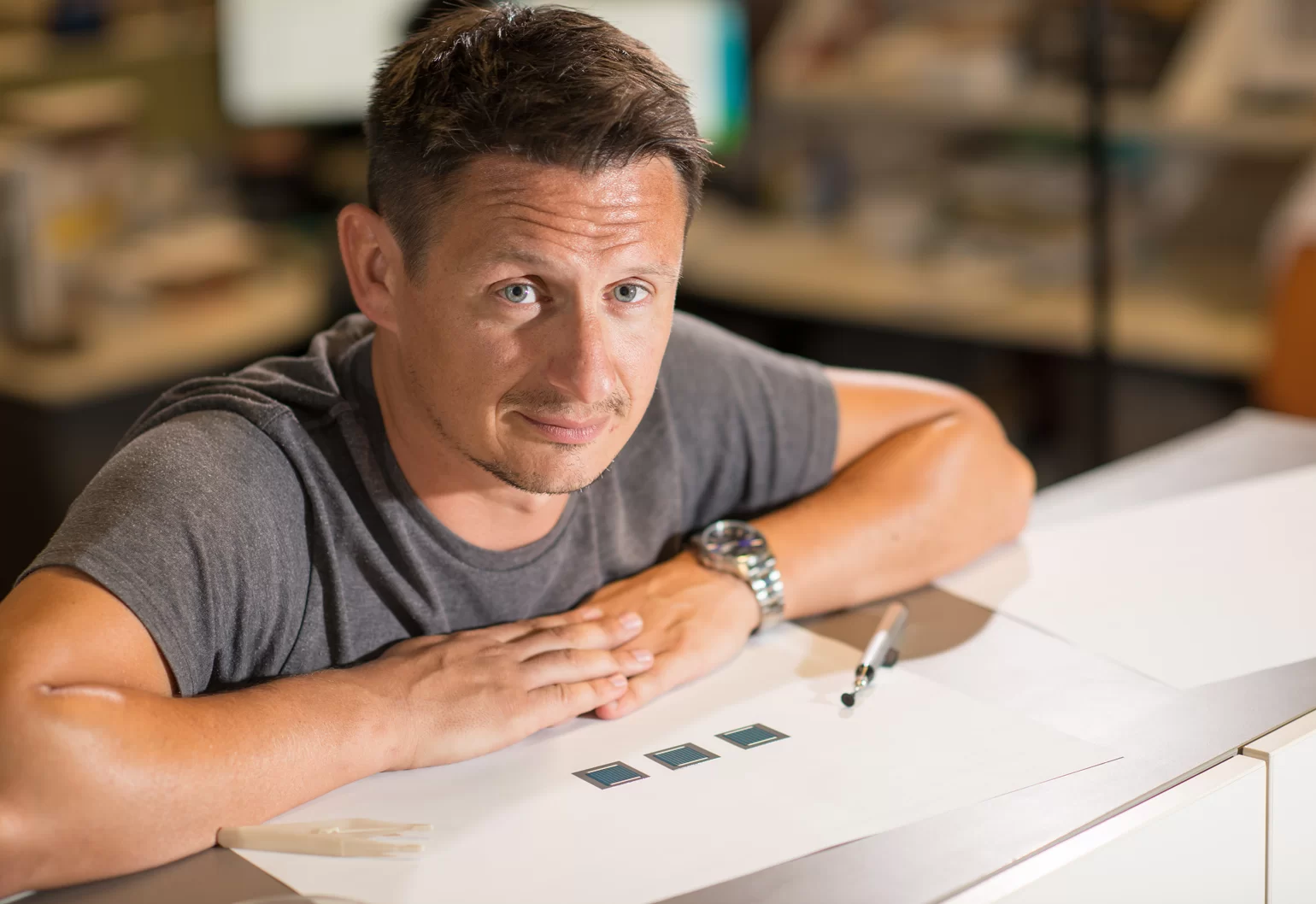The effectiveness of turning solar energy into electrical energy has increased drastically in recent years. Dr Brett Hallam is one engineer working on the next generation of improvements.
Dr Brett Hallam’s work in photovoltaic engineering has earned numerous prestigious awards, but he wasn’t always focussed on a career in groundbreaking PV research.
He was set on a diesel mechanic apprenticeship before deciding he might give university a try.
“I was flicking through the UAC guide and came across a degree for solar energy engineering and that sounded pretty cool. I applied for a rural engineering scholarship. I got it and moved to Sydney,” he told create.
The young man from Bairnsdale, about three hours’ east of Melbourne, found a mentor in legendary PV innovator, the late Professor Stuart Wenham.
“I don’t know where I’d be without him,” Hallam said.
“He got me a job consulting for a company in China, got me heavily involved in research, and I haven’t looked back.”
He has since built on both Wenham’s work using hydrogen to boost the efficiency of cheap p-type silicon and UNSW’s proud history in world-leading solar energy research.
It has earned him recognition including a Discovery Early Career Research Award and a NSW Premier’s Prize for Science and Engineering (both in 2017), and listings last year in the Renewable Energy World Solar 40 Under 40 listing in 2018 and create’s list of Australia’s Most Innovative Engineers.
Industrial partnerships
Hallam began his work at UNSW via a double degree, studying photovoltaics and solar energy engineering and science, with majors in both physics and physical oceanography and meteorology.
He prefers to consider himself an engineer (“It sounds more sexy”), though he credits the science training as highly useful.
“I started working in the oceanography department, doing a little bit of research on numerical simulations,” he said.
“I’ve been able to use that in the solar space to look at chemical reactions that take place in solar panels, modelling what should happen under real weather scenarios … In the bigger scheme of things, weather is very important in predicting solar output.”

UNSW began offering PV research through the School of Electrical Engineering in 1974. Recent additions have included the Solar Industrial Research Facility, which Hallam said allows him to migrate ideas from the lab onto the production tools used to make panels in factories.
Asked about the major challenges in moving ideas from the lab to production, Hallam said the solar industry operates with slim margins. While new technology is vital to improving products, companies can be reluctant to pay for research.
At the same time, there is a shortage of industrial capacity in Australia. Tindo Solar (bought by Cool or Cosy in 2017) is the country’s sole manufacturer of solar panels. Economies of scale make manufacture of PV products in Australia a challenge, despite the country punching well above its weight in its contribution of technology to the world.
But solar PV installation levels have increased handsomely since the 1980s, with Australian rooftop solar leading the world. According to one bullish prediction by IHS Markit, total global installed capacity of PV will increase by 18 per cent this year compared to last, reaching 123 GW.
Hallam’s university can claim a great deal of credit for the progress of solar energy harvesting. Its researchers have set numerous records for efficiency from the 1980s onward, and much of their work has migrated into industrial use.
“It’s a matter of trying to be done on a cost basis similar to what can be done in China,” said Hallam, adding “it would be great to see some initiative to encourage the use of Australian-made solar panels”.
“Probably we need to transition away from coal and if you could transition that to making our own green energy then that would be great.”
Gold rush
In the meantime, Hallam and his team are focussed on continuing UNSW’s output of globally relevant solar innovations.
Hallam’s work at UNSW’s School of Photovoltaic and Renewable Energy Engineering (SPREE) develops the concept of advanced hydrogenation, an area for which he is research director.
It builds on a breakthrough in hydrogen passivation. Controlling the charge state of hydrogen atoms in silicon via lasers allows these to bond to and repair defects in silicon wafers, such as the boron-oxygen complex. This passivation vastly increases the effectiveness of p-type silicon in converting solar to electrical energy.
Hallam wants to see more industry involvement in helping solar power take off. P-type is the most common form of silicon in photovoltaics, with n-type silicon devices offering higher efficiency but also higher cost.

He is the principal inventor of a hydrogenated heterojunction process – part of the work that earned Hallam his Most Innovative Engineer award in 2018 – with a provisional patent filed and funding from ARENA to move this to pilot production. He described the work as merging the best qualities of both p-type and n-type silicon solar cells.
“We’ve figured out how to basically take terrible silicon, improve it, get it to a quality that can be used with these high-efficiency cell architectures in a way that gets around all the thermal constraints imposed by the layers that can only be used at low temperatures or they’ll degrade,” said Hallam, adding that right now the task is one of integration.
“We had a nice breakthrough a few months ago where we were able to take a normal heterojunction solar cell, given the normal n-type devices straight off the production line and get significant performance enhancements,” he said.
“Companies making heterojunction cells are quite excited about this. We’re looking at signing up some extra partners to the project to take advantage of this and develop it further.”
Are you an innovative engineer? Know someone who is? Nominations are now open for create’s Most Innovative Engineers 2019 list. Applications close 28 February. Apply here.



